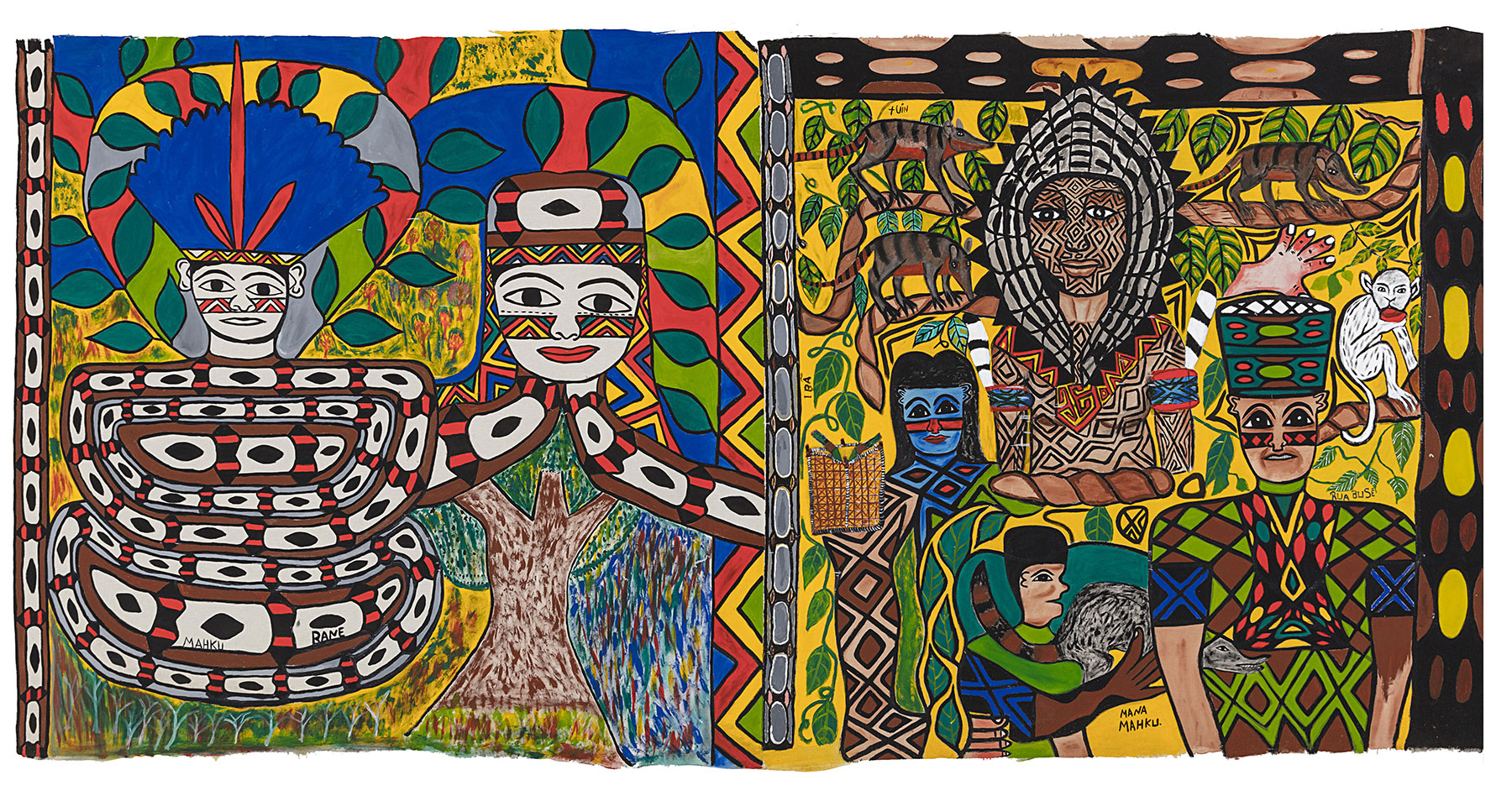ART-PREVIEW:Encontros Ameríndios
 Due to the dynamics of the colonial system, it has only been in recent decades that the artistic production of Amerindian peoples has garnered recognition and valorization in the art field—to a great extent in North America and Oceania and, only later and more slowly, in Latin America. Previously relegated to the status of an ethnographic object or merely handicraft, these works also reflect the “tenacity to overcome the oppressions of the historical process of plundering and the attempts of domination they suffered, their ability to overcome adversities, their self-determination
Due to the dynamics of the colonial system, it has only been in recent decades that the artistic production of Amerindian peoples has garnered recognition and valorization in the art field—to a great extent in North America and Oceania and, only later and more slowly, in Latin America. Previously relegated to the status of an ethnographic object or merely handicraft, these works also reflect the “tenacity to overcome the oppressions of the historical process of plundering and the attempts of domination they suffered, their ability to overcome adversities, their self-determination
By Efi Michalarou
Photo: Sesc Archive
Known for valuing collectivity, peoples from the American continent are often interpreted in a homogeneous way, even though there are, in Brazil alone, 305 ethnic groups, speakers of 274 languages. No wonder they are often mistakenly called – and generically – “Indians”. However, the so-called Amerindian peoples try to value differences and are far from being uniform in artistic expression. The aim of the exhibition “Encontros Ameríndios” is to investigate new dialogic possibilities based on the encounters between the production of artists of the indigenous people of Guna (Comarca Kuna Yala, Panama), Haida (Haida Gwaii archipelago, British Columbia, Canada), Huni Kuin (Indigenous Land of the Upper Rio Jordão, Acre, Western Amazon, Brazil), Shipibo-Konibo (community of Cantagallo, Lima, Peru, and Upper Ucayali, Peruvian Amazon) and Tahltan (Telegraph Creek and Vancouver, British Columbia, Canada). As the curator of the exhibition says “The idea of an encounter of alterities is fundamental to the Amerindian socio-cosmological worlds. Intercultural and intercommunity encounters are widely valorized by indigenous peoples ranging from those of Amazonia to those of British Columbia, with their famous potlatch feasts, where they get together to celebrate their ancestrality and cultural and material wealth. The artists featured in this exhibition are the protagonists of new dialogic possibilities between the Amerindian creativities, artistic techniques and aesthetics”. Even though they share similar historical experiences of colonial oppression and domination, as well as of community and ethnic resistance—the artists featured in the exhibition possess diverse artistic aesthetic preferences and, inspired by ancestral knowledge, they are creators of singular visualities linked to mythological, ecological and cosmological relationships.
Participating Artists: Alano Edzerza, Gwaai and Jaalen Edenshaw, Ana Bella Fernandez, Angelmira Owens Perez, Benilda Mores, Briseida Iglesias, Buna Bipi, Conciencia Grace Rodriguez, Dilma Gardel, Edita Lopez, Emilsy Fernandez, Flor Fernandez, Gilda Tejada, Lea Amelta Tejada, Lonilda Gonzalez, Lucrecia Places, Rosalia Tejada, Victoria Gonzalez, Olinda Silvano, Wilma Maynas, Silvia Ripoca, Ronin Koshi Arias Silvano, Dora Inuma Ramírez and the artist collective MAHKU
Photo: Lonilda Gonzalez, Siggui Mola (A Flecha), 2019, reverse application, © & Courtesy the artist
Info: Curator: Aristoteles Barcelos Neto, Sesc Vila Mariana, Rua Pelotas 141, São Paulo, Brazil, Duration: 31/72021-13/2/2022, www.sescsp.org.br







